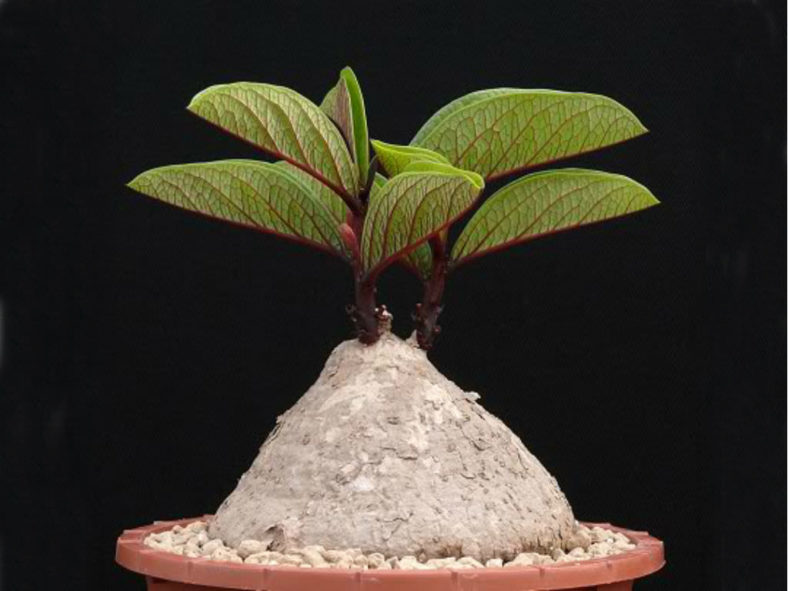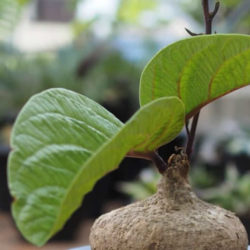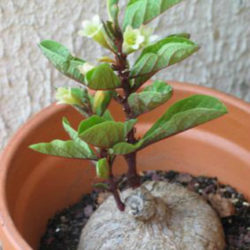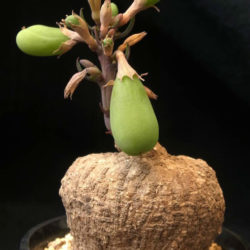Scientific Name
Adenia goetzei Harms
Scientific Classification
Family: Passifloraceae
Subfamily: Passifloroideae
Tribe: Passifloreae
Genus: Adenia
Origin
This species is native to Tanzania, Zaire, Zambia, and Zimbabwe. It grows in woodland, shrubby vegetation, and on rocky hills at elevations between 2,950 and 4,270 feet (900 and 1,300 m).
Description
Adenia goetzei is an erect, unbranched or sparingly branched plant with annual stems growing from a decorative subspherical tuber. It grows up to 14 inches (35 cm) tall, while the caudex reaches a diameter of 8 inches (20 cm). The stems are reddish near the apex, without tendrils, and bear somewhat glaucous leaves pinnately veined and finely purplish-brown spotted beneath. The leaves are lance-shaped, up to 8.8 inches (22 cm) long, up to 2.6 inches (6.5 cm) wide, and attached to the stems by a short petiole.
Flowers are polygamous, yellowish-green, and appear in 1- to 5-flowered inflorescences during the wettest months (December to February) of the rainy season in the native habitat of the species. Fruits are ellipsoid to obovoid capsules, each with 30 to 40 seeds.

Hardiness
USDA hardiness zone 11a to 11b: from 40 °F (+4.4 °C) to 50 °F (+10 °C).
How to Grow and Care
Adenia plants are summer growers and can be watered and fed regularly if planted in fast-draining soil. Let the soil dry between watering if you are in a humid climate.
Most of your growth will be during the warm season, and the plant will have the most leaves. The plant will also grow best with the leaves exposed to bright light but the caudex shaded.
Protect the plant from frost during the cool months to keep it alive. The plant rests typically during this period, and water should be kept to a minimum. However, you can keep the plant active if you keep it above 50 degrees Fahrenheit (10 degrees Celsius).
The sap of Adenias is poisonous, and they should be handled with caution, particularly when pruning.
Most cuttings do not produce a caudex, so it is best to propagate by seeds. Adenias are either male or female, so one of each is required to produce seeds.
See more at How to Grow and Care for Adenia.
Links
- Back to genus Adenia
- Succupedia: Browse succulents by Scientific Name, Common Name, Genus, Family, USDA Hardiness Zone, Origin, or cacti by Genus
Photo Gallery
Click on a photo to see a larger version.


